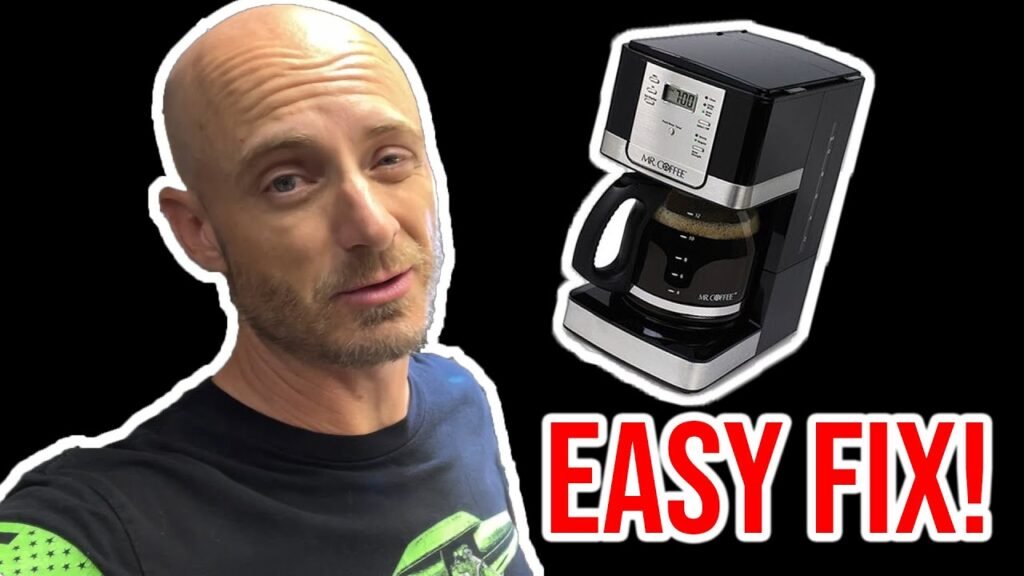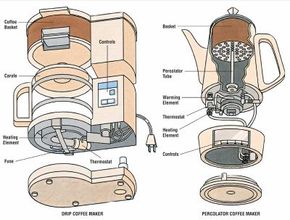How do you fix a coffee maker that won’t brew? If you’re like most people, starting your day with a steaming cup of coffee is essential. There’s nothing quite like the aroma and taste of freshly brewed coffee to wake you up and get you ready to face the day. But what happens when that reliable coffee maker you count on every morning suddenly stops brewing? It can feel like a mini-crisis. Don’t worry, though. With a few troubleshooting tips and solutions, you can often get your coffee maker back in working order without too much fuss.

Understanding Common Coffee Maker Problems
Before jumping into fixing the issue, it’s useful to understand some common problems that can make a coffee maker stop brewing. Known issues can range from simple user errors to more complex mechanical failures. Knowing which category your problem falls into can save you time and stress.
User Errors and Simple Fixes
Sometimes, the reason your coffee maker isn’t brewing is due to a simple oversight.
- Water Reservoir: Make sure the water reservoir is full. A lot of times, people forget to add water or don’t add enough.
- Coffee Grounds: Check to see if there are coffee grounds in the filter. Without them, the machine has nothing to brew.
- Filter Position: Ensure that the coffee filter is seated properly. If it’s out of place, the machine may not function correctly.
Electrical and Mechanical Problems
Electrical and mechanical issues can be a bit more complicated but are also more common than you might think.
- Power Issues: Faulty power cords or malfunctioning outlets can prevent your coffee maker from turning on.
- Mineral Build-up: Hard water can leave deposits that clog your coffee maker’s inner workings.
- Faulty Timer or Auto-Start: If your coffee maker has a timer or auto-start feature, these components can sometimes fail, preventing the machine from starting.
Basic Troubleshooting Steps
Here are some fundamental steps you can take to diagnose why your coffee maker isn’t brewing. Each step includes simple checks you can perform and possible solutions to resolve the issue.
Step 1: Check the Power Supply
The first thing you want to do is make sure that the machine is receiving power.
Actions:
- Check the Plug: Verify that the coffee maker is plugged into a working outlet.
- Examine the Cord: Look for any visible signs of damage to the power cord.
Solutions:
- Reset Outlet: Try plugging the coffee maker into a different outlet.
- Replace the Cord: If the cord is damaged, replacing it may solve your problem.
Step 2: Inspect the Water Supply
A lack of water in the reservoir can prevent your machine from brewing.
Actions:
- Check the Reservoir: Ensure it’s filled to the appropriate level.
- Look for Blockages: Examine the water intake section for clogs or obstructions.
Solutions:
- Fill the Reservoir: Simply add more water.
- Clean the Intake: Remove any blockages manually or use a cleaning solution.
Step 3: Clean the Coffee Maker
Over time, coffee makers can accumulate grime and mineral deposits that affect performance.
Actions:
- Run Cleaning Cycles: Use a mixture of water and vinegar to clean the machine.
- Disassemble and Scrub: If safe to do so, disassemble parts of the machine and scrub with a soft brush.
Solutions:
- Descaling: Use a descaling solution designed for coffee makers to remove mineral build-up.
- Regular Maintenance: Perform these cleaning tasks regularly to prevent future issues.
| Cleaning Frequency | Action |
|---|---|
| Daily | Empty grounds, rinse parts |
| Weekly | Clean with mild dish detergent |
| Monthly | Deep clean with vinegar or descaler |
Advanced Troubleshooting Steps
If the basic troubleshooting steps didn’t work, it might be time to dive a little deeper into the issue.
Step 4: Check the Heating Element
The heating element is responsible for heating the water. If it’s malfunctioning, your coffee maker won’t brew.
Actions:
- Feel for Heat: Carefully touch the exterior of the machine where the heating element is located to see if it’s warm.
- Listen for Sound: Pay attention to whether you can hear any noises that indicate the heating element is working.
Solutions:
- Fuse Replacement: Sometimes the issue can be as simple as replacing a blown fuse.
- Element Replacement: In more serious cases, you might need to replace the heating element.
Step 5: Investigate the Pump
The pump moves water from the reservoir to the coffee grounds. If it’s not working, nothing will brew.
Actions:
- Listen for Operation: Turn on the coffee maker and listen for the sound of the pump operating.
- Check for Water Movement: Observe if water is being moved from the reservoir.
Solutions:
- Clean or Replace: Pumps can sometimes be cleaned, but often need to be replaced if they’ve gone bad.
Specific Coffee Maker Models
Different brands and models can have unique problems and solutions. Here are some common brands and tips specific to them.
Keurig Coffee Makers
Issues with Keurig machines often involve the piercing needle or descaling.
Common Issues:
- Incomplete Brew Cycle: Often caused by clogging.
- Slow Brewing: Usually a sign that descaling is needed.
Specific Solutions:
- Check the Needle: Use a paperclip to clear any blockages in the needle.
- Descale: Run a descaling solution through the machine according to the manufacturer’s instructions.
Drip Coffee Makers
Drip coffee makers like those from Mr. Coffee or Black & Decker may have issues related to the filter basket or water spout.
Common Issues:
- Leaking: Often due to a poorly seated filter or overflow.
- No Brew: Can be a result of a faulty electrical connection.
Specific Solutions:
- Reposition Filter: Make sure the filter is correctly in place.
- Check Electrical Components: Ensure that all electrical connections are secure.
Espresso Machines
Espresso machines from brands like Breville or DeLonghi can suffer from pressure issues or steam wand clogs.
Common Issues:
- Low Pressure: Could be due to scale build-up.
- Steam Wand Blockage: Often caused by milk residue.
Specific Solutions:
- Descale: Regularly descale to maintain pressure.
- Clean Wand: Thoroughly clean the steam wand after each use.

When to Call a Professional
Sometimes, the problem might be beyond your ability to fix. Knowing when to call a professional can save you time and possibly prevent further damage.
Indicators You Need Professional Help
If your machine exhibits any of the following issues, it might be time to consult a professional.
- Unusual Noises: Grinding or screeching sounds.
- Persistent Electrical Issues: Tripping breakers or consistent power loss.
- Complex Mechanism Failure: Malfunctions in built-in grinders or pumps.
Selecting a Repair Service
When selecting a repair service, consider the following factors to ensure you get quality service.
- Certifications: Look for technicians certified to work on your specific brand.
- Reviews: Check online reviews to gauge the reliability of the service.
- Warranty: See if the repair service offers a warranty on their work.
| Factor | Details |
|---|---|
| Certifications | Brand-specific certifications if available |
| Reviews | Check sites like Yelp or Google Reviews |
| Warranty | Ensure labor and parts are warrantied |
Preventative Maintenance Tips
Regular maintenance can go a long way in ensuring your coffee maker has a long, trouble-free life. Here are some tips to keep it in top condition.
Regular Cleaning
Keeping your machine clean is essential for optimal performance.
- Daily: Empty the used coffee grounds and rinse removable parts.
- Weekly: Wipe down exterior surfaces and clean the carafe.
- Monthly: Perform a deep cleaning with a descaling solution.
Proper Use
A few user habits can greatly impact the longevity and performance of your coffee maker.
- Follow Instructions: Always follow the manufacturer’s instructions for brewing and cleaning.
- Use Filtered Water: Hard water can cause scale build-up more quickly than filtered water.
- Avoid Overfilling: Do not exceed the recommended amount of water and coffee grounds.
Conclusion
When your coffee maker stops brewing, it can feel like the end of the world—at least for the day. But with a systematic approach to troubleshooting, you can often pinpoint the issue and get it resolved quickly. Whether it’s a simple user error, a need for a thorough cleaning, or a more complex mechanical issue, knowing what to look for can save you both time and energy. And remember, regular maintenance is key to preventing many of these problems in the first place. So go ahead and roll up your sleeves, and soon enough, you’ll be back to enjoying that perfect cup of coffee.

